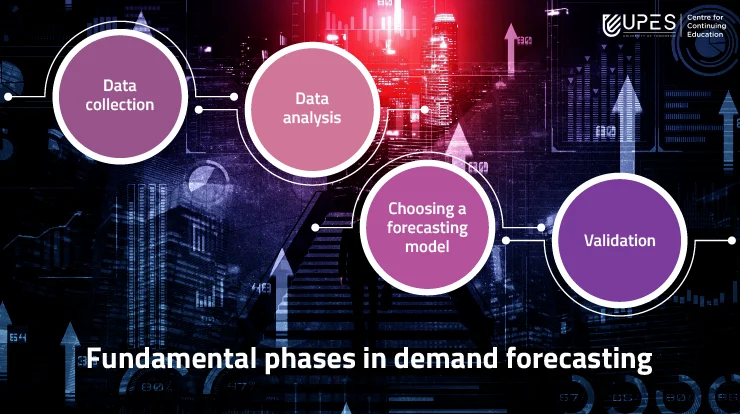A Guide to Master Demand Planning & Forecasting

Demand planning is a critical function in logistics and supply chain management. It involves predicting customer demand and developing a plan to meet that demand. Accurate demand forecasting may help businesses streamline operations, cut costs, and boost customer satisfaction.
Understanding customer demand
Understanding the factors that influence customer demand is critical to accurately forecasting demand. These factors can include economic conditions, changes in consumer behavior, market trends, and competitor actions. By analyzing these factors, companies can understand how demand will likely change over time.
The accuracy and effectiveness of demand forecasting operations can be considerably increased using demand planning and forecasting software, allowing companies to make data-driven decisions and improve their supply chain management tactics.

Types of customer demand
Constant, seasonal, and irregular demand are the three basic categories of client demand.
- Constant demand refers to a stable demand that remains relatively consistent over time.
- Seasonal demand is defined by variations in demand that coincide with particular seasons of the year.
- Unpredictable circumstances like product recall rule changes or natural disasters can lead to irregular demand.
By understanding these different types of demand, companies can develop more accurate demand forecasts and better allocate their resources to meet customer needs.
Demand planning and forecasting in supply chain management, ensuring that products are accessible when and where required, assists firms in managing inventory levels, reducing waste, and enhancing customer happiness.
Demand forecasting methods
There are two main approaches to demand forecasting: qualitative and quantitative methods.
Qualitative methods
Qualitative methods rely on expert opinions and subjective judgments to forecast demand. These methods can include techniques such as market research, the Delphi method, and expert opinion.
Qualitative methods are frequently used when there is a lack of historical data or when a corporation is entering a new market.
Quantitative methods
Quantitative methods, on the other hand, use historical data and statistical models to forecast demand. These methods can include time series analysis, causal analysis, and simulation.
When there is a large quantity of historical data available, and a corporation is attempting to forecast demand for an existing good or service, quantitative methods are frequently used.
The need for demand forecasting helps businesses make informed decisions about production, inventory, and resource allocation, allowing them to meet customer demand and maximize profits.
Five essential steps of demand forecasting

Data collection, data analysis, choosing a forecasting model, and validation are the five fundamental phases in demand forecasting, regardless of the approach employed.
These processes entail acquiring information on previous demand, examining that data to spot trends and patterns, choosing a forecasting model that is suitable for the data, applying the model to predict future demand, and verifying the forecast’s correctness.
The benefits of forecasting customer demand for business include optimizing inventory levels, reducing waste and costs, improving customer satisfaction, and providing valuable insights for decision-making and strategic planning.
Data collection and analysis to meet the need for demand forecasting and demand planning:
Collecting and analyzing relevant data through relevant demand forecasting methods is essential to forecast demand accurately. Some sources of data that companies can use to predict demand include sales data, market research, industry reports, and customer feedback.
Companies can find trends, patterns, and other elements that can assist them in predicting future demand by examining this data.
The market for demand planning solutions worldwide, valued at USD 3.6 billion in 2021, is anticipated to increase at a CAGR of 10.3% from 2022 to 2030.
Data analysis techniques
Some data analysis techniques that can be used for demand forecasting include statistical analysis, data mining, and machine learning. Statistical analysis involves using mathematical formulas and models to analyze data, while data mining involves using algorithms to identify patterns in data.
Importance of accurate data collection and analysis
Unique data collection and analysis are crucial to developing detailed demand forecasts. Spotting patterns and trends is ch with reliable data, and forecasting models are more accurate. By investing in accurate data collection and analysis techniques, companies can improve their forecasting accuracy and better meet customer demand.
Elements of demand planning
Demand planning considers several elements, including product demand, supply chain constraints, production capacity, inventory levels, and sales and marketing plans.
Product demand
Understanding product demand is essential to developing an effective demand plan. When predicting demand for a specific product or service, businesses must consider seasonality, patterns, and client preferences.
Supply chain constraints
Supply chain restrictions such as lead times, transportation expenses, and inventory levels may impact a company’s capacity to satisfy customer demand. Therefore, companies must consider these limitations when creating a demand plan to fulfill orders promptly and affordably.
Production capacity
Production capacity is another critical factor to consider when developing a demand plan. Companies must ensure that they have enough production capacity to meet forecasted demand while balancing inventory levels and supply chain constraints.
Sales and marketing plans
Sales and marketing plans can also affect demand, and companies need to consider these plans when developing a demand plan.
For instance, a marketing campaign may boost interest in a specific product, whereas a sales promotion may affect the timing of client purchases.
Activities involved in demand planning
Demand planning involves three primary activities:
- Demand Forecasting– Demand forecasting involves using data and statistical models to predict future demand.
- Demand Shaping– Demand shaping involves influencing demand through sales and marketing activities.
- Demand Management– Demand management optimizes inventory levels, production capacity, and supply chain operations to meet forecasted demand.
Demand planning examples include analyzing historical sales data, using market research to identify consumer trends, and collaborating with suppliers and distributors to ensure inventory levels align with anticipated demand.
Implementation and monitoring

After developing a demand plan, companies must implement and monitor it to ensure they are effectively meeting customer demand. This involves taking several steps, including:
Implementing the demand plan:
Companies must implement the demand plan, which involves adjusting production schedules, inventory levels, and supply chain operations to meet forecasted demand. This may also include hiring additional staff or outsourcing production to meet demand.
Monitoring demand:
Companies need to track actual demand and compare it to forecasted demand to identify discrepancies. This can help them adjust their operations and production schedules to better meet customer demand.
Adjusting the demand plan:
Companies may need to modify their demand plan to better fulfill client needs based on actual demand and customer feedback. This could entail altering inventory levels, marketing tactics, or production timetables.
Evaluating performance:
Businesses must frequently assess their performance to ensure they are achieving their goals and objectives. Analyzing key performance measures, including inventory turnover, customer happiness, and order fulfillment rates, may be necessary for this.
Demand planning vs forecasting is two distinct processes in supply chain management. Demand planning focuses on developing strategies to meet anticipated demand, and demand forecasting rely on data analysis and modeling to predict future demand levels.
Conclusion
Demand planning and forecasting are essential for companies to meet customer demand while optimizing their operations and costs effectively. Companies can better predict the future direction and adjust their operations by understanding customer demand, using accurate data collection and analysis techniques, and developing a comprehensive demand plan.
Recommended Blogs

7 Surprising Benefits of an MBA in Oil and Gas Management
An MBA in Oil and Gas Management helps you advance your career with Leadership Skills, Networking, Global Knowledge, Professional Growth.
Read MoreMar 15, 2024 I 2 minutes
45+ Business Development Interview Qs! (Basic, Concepts, Tech)
Master your Business Development interview prep with 45 most asked questions for freshers, experienced & techies. New Questions updated!
Read MoreFeb 16, 2024 I 10 minutes
Introduction to Renewable Energy Management: What You Need To Know
Discover what is renewable energy management, its importance to the world and the key aspects of managing these energy sources.
Read MoreJan 20, 2023 I 2 minutes
Ace Your Data Governance Interview with these 55 Question Types
Master 55 data governance interview Questions, from data lineage puzzles to AI challenges. Sharpen your skills & land your dream data role.
Read MoreJan 21, 2024 I 15 minutes


